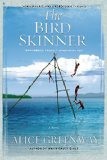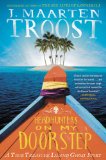Summary | Excerpt | Reviews | Beyond the book | Read-Alikes | Genres & Themes | Author Bio

Everything He Loved in Life, and Lost, 1934-1961
by Paul HendricksonA brilliantly conceived and illuminating reconsideration of a key period in the life of Ernest Hemingway that will forever change the way he is perceived and understood.
From a National Book Critics Circle Award winner, a brilliantly conceived and illuminating reconsideration of a key period in the life of Ernest Hemingway that will forever change the way he is perceived and understood.
Focusing on the years 1934 to 1961 - from Hemingway's pinnacle as the reigning monarch of American letters until his suicide - Paul Hendrickson traces the writer's exultations and despair around the one constant in his life during this time: his beloved boat, Pilar.
We follow him from Key West to Paris, to New York, Africa, Cuba, and finally Idaho, as he wrestles with his best angels and worst demons. Whenever he could, he returned to his beloved fishing cruiser, to exult in the sea, to fight the biggest fish he could find, to drink, to entertain celebrities and friends and seduce women, to be with his children. But as he began to succumb to the diseases of fame, we see that Pilar was also where he cursed his critics, saw marriages and friendships dissolve, and tried, in vain, to escape his increasingly diminished capacities.
Generally thought of as a great writer and an unappealing human being, Hemingway emerges here in a far more benevolent light. Drawing on previously unpublished material, including interviews with Hemingway's sons, Hendrickson shows that for all the writer's boorishness, depression, and alcoholism, and despite his choleric anger, he was capable of remarkable generosity - to struggling writers, to lost souls, to the dying son of a friend.
We see most poignantly his relationship with his youngest son, Gigi, a doctor who lived his adult life mostly as a cross-dresser, and died squalidly and alone in a Miami women's jail. He was the son Hemingway forsook the least, yet the one who disappointed him the most, as Gigi acted out for nearly his whole life so many of the tortured, ambiguous tensions his father felt. Hendrickson's bold and beautiful book strikingly makes the case that both men were braver than we know, struggling all their lives against the complicated, powerful emotions swirling around them. As Hendrickson writes, "Amid so much ruin, still the beauty."
Hemingway's Boat is both stunningly original and deeply gripping, an invaluable contribution to our understanding of this great American writer, published fifty years after his death.
Hemingway's Boat is well-written and rigorously researched, but it's an exhaustive and exhausting read. While I appreciate that Hendrickson has chosen to frame Hemingway's last 30 years through his love of fishing and spending time on the water, the sheer volume of information on types of fish, fishing gear, and boating lore tends to detract from the narrative itself. I doubt that most readers, even Hemingway scholars, want to know the complete history of the shipyard that built Hemingway's beloved Pilar. The author quotes so extensively from external sources that the book's bibliography ends up being its most striking feature; I often found myself wanting to read these sources (primarily memoirs written by Hemingway's relatives and associates) for myself so that I could come to my own conclusions... Ultimately, this book feels like a flawed achievement, one that has already garnered much critical acclaim but will likely prove too daunting for all save the most fanatical Hemingway fans...continued
Full Review
(816 words)
This review is available to non-members for a limited time. For full access,
become a member today.
(Reviewed by Marnie Colton).
On the surface, few early- to mid-twentieth century writers could be more different than Ernest Hemingway and Aldous Huxley. Hemingway (1899-1961), a rugged American with an appetite for alcohol, women, and outdoor sports, fine-tuned the art of the terse, elliptical sentence. Huxley (1894-1963), on the other hand, was born into a prominent English family, wrote elegant satirical and dystopian novels like Crome Yellow and Brave New World, and embraced the new frontier of hallucinogenic drugs, most explicitly in his extended essay on mescaline usage, The Doors of Perception. Hemingway eagerly participated in World War I as an ambulance driver, sustaining a serious wound that kept him hospitalized for months and that stoked his public image as...
This "beyond the book" feature is available to non-members for a limited time. Join today for full access.

If you liked Hemingway's Boat, try these:

by Alice Greenway
Published 2014
Written in lush, lyrical prose - rich in island detail, redolent of Maine in summer and of the Pacific -The Bird Skinner is wise and wrenching, an unforgettable masterwork from an extraordinarily skillful novelist.

by J. Maarten Troost
Published 2014
Headhunters on My Doorstep is a funny yet poignant account of one man's journey to find himself that will captivate travel writing aficionados, Robert Louis Stevenson fans, and anyone who has ever lost his way.
There are two kinds of light - the glow that illuminates, and the glare that obscures.
Click Here to find out who said this, as well as discovering other famous literary quotes!